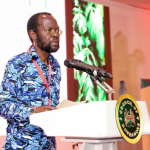A 2,000-year-old mosaic has been unearthed during excavations at a Roman site in Shropshire. The mosaic, found at Wroxeter Roman City near Shrewsbury, features vibrant depictions of dolphins and fish. It was discovered while archaeologists were searching for the main civic temple at the site.
“Our excavations were in hope of discovering the walls of this building, but we never suspected we would find a beautiful and intact mosaic, which had lain hidden for thousands of years,” said Win Scutt, from English Heritage.
“It’s always an astonishing moment when you uncover a fragment of beauty hiding just below the ground,” he added.
Archaeologists who made the discovery stated that the mosaic dates back to a period shortly after the city was founded and is believed to have been commissioned by a “wealthy and important person.”
The team also uncovered coins, pottery, and a painted plaster wall adjacent to the mosaic, which experts believe will assist in dating different phases of the city and the activities that occurred there. The excavation site has since been reburied for protection and preservation.
Wroxeter, formerly known as Viroconium Cornoviorum, was established in the 90s AD and featured a civic bathhouse, marketplace, county hall, judicial center, and over 200 houses. Today, only a few ruined structures remain above ground, which are maintained by English Heritage.
The excavation was a collaborative effort involving English Heritage, the University of Birmingham, Vianova Archaeology and Heritage Services, and Albion Archaeology. In July, archaeologists also discovered a large monumental building along the city’s main road, as well as a shrine or mausoleum that may have honored a significant individual.



